The desert iguana, Dipsosaurus dorsalis, is a lizard from the area around Arizona; Baja, California; and Northwestern Mexico.
It’s sometimes known as the Arizona desert iguana.
It has a long tail and brown spots which distinguish it from common species like the Green Iguana.
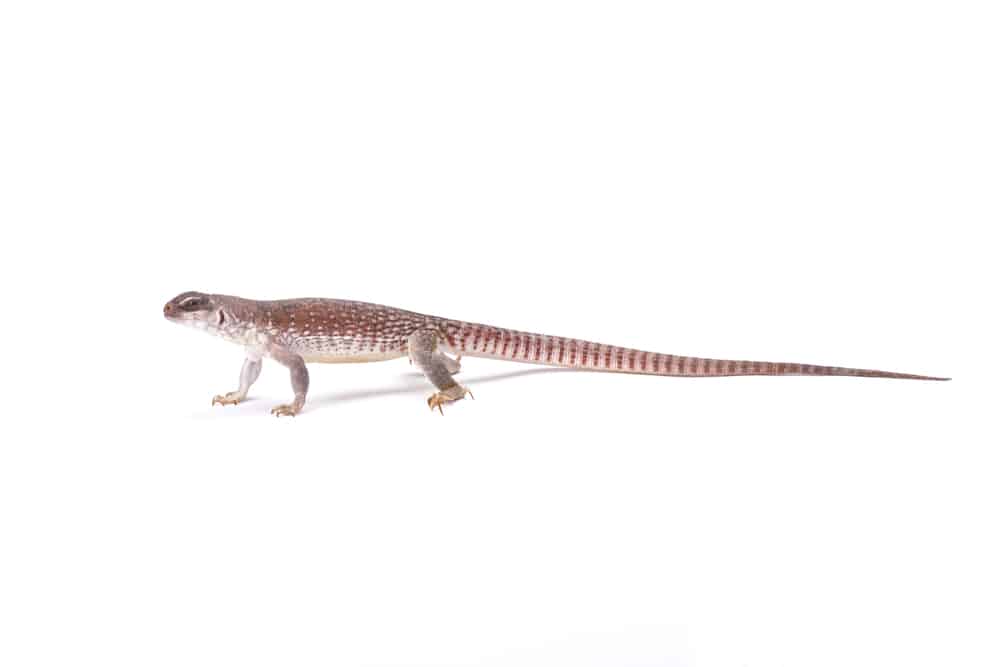
The IUCN (International Union for the Conservation of Nature) lists desert iguanas as ‘Least Concern’, which means that they’re not in danger of extinction
The desert iguana, as a pet, is excellent if you meet its needs. Let’s take a closer look.
In This Article
Are Desert Iguanas Good Pets?
The desert iguana has a few unusual requirements, like high temperatures. Take this into account before deciding to get one.
Nevertheless, they make excellent pets and people refer to them as the friendliest lizards in the desert.
Since they’re common, you can keep desert iguanas and know that the species is safe from extinction.
Desert Iguana Size
The desert iguana size averages at around 16 inches.
Sometimes a full-grown desert iguana reaches 18 inches, but this isn’t a common occurrence.
A baby desert iguana measures in at just under four inches.
When compared to other species, desert iguanas are tiny.
The more common green iguana reaches lengths of up to seven feet (84 inches) which is more than five times as long as the desert iguana.
Alternatively, if you’re looking to buy a medium-sized iguana, the spiny-tailed iguana is an option worth considering.
Desert Iguana Tank Size
Desert iguanas are smaller than most iguana species. They don’t need the massive enclosures that their relatives require.
The average desert iguana cage is a 65-gallon aquarium. Any enclosure with adequate dimensions will serve the purpose.
The desert iguana tank size for a pair is 36 inches long, 24 inches wide, and 24 inches high.
If you start with hatchling desert iguanas, you can use a 10-gallon aquarium then upscale as they grow. These tanks have dimensions of 20 inches x 10 inches x 12 inches.
Desert Iguana Care
Desert iguana care is easy if you know which requirements you need to meet. We’ll discuss the main aspects in the following sections.
Enclosure Setup
Desert iguanas dwell in deserts with a lot of creosote bush. To make them feel at home, you need to try and mimic their natural environment.
It’s not difficult to make an enclosure seem desert-like (hint: it involves a lot of sand).
Ensure that the heating and lighting are correct since this is a major requirement for desert species. A deep substrate is essential for these avid burrowers.
Ensure that there’s a hide on both sides of the tank so that the lizards can adjust their body temperatures.
We recommend using a screen top for the enclosure. Desert iguanas come from dry areas and won’t stay healthy if they have to deal with constant moisture.
Heating and Lighting
The main difficulty with keeping desert iguanas is that they require much higher temperatures than most lizards.
As with any reptile, the animals do best when provided with a temperature gradient. Aim for the following temperature zones:
- Hot side: 105 °F
- Cool side: 90 °F
- Ambient temperature: 100 °F
Keep the temperature in the enclosure above 90 °F at all times.
Desert iguanas can only adjust their body temperature by moving between cool and warm places. Having a temperature gradient allows them to do so.
We suggest using a combination of a heating pad and a heat lamp to achieve the ultimate temperature range.
A digital thermostat will help keep the temperatures as high as you need them to be.
Since the desert has a high UV level, these lizards benefit from UVB lighting.
We suggest running a full-spectrum light, a UVB light, and a heat lamp in conjunction.
Place a high-quality thermometer on each side of the enclosure and one in the middle. This allows you to monitor all the temperature zones.
Water and Humidity
Desert iguanas need constant access to clean water and a humidity level of 15-30%
Scientists have performed in-depth studies about the effects of water on species like the desert iguana.
The article, ‘Physiological Ecology of desert iguana (Dipsosaurus dorsalis) Eggs: Temperature and Water Relations‘, is all about how desert iguanas breed in dry conditions.
If you’re planning on breeding the desert iguana, you’d be wise to learn more about its life history.
When it comes to keeping Dipsosaurus dorsalis lizards, ensure that they have constant access to fresh water.
They’ve adapted to live in dry conditions, but you SHOULDN’T make them go without water.
These lizards have low humidity requirements. High humidity can have negative effects on their respiratory system.
We suggest using a screen lid on the enclosure so there’s plenty of aeration. Use a hygrometer to monitor levels and ensure that the humidity stays in the 15-30% range.
Decor and Environmental Enrichment
Incorporate some large pieces of driftwood or sterile wood for them to climb on.
Have at least the standard two hides. You could get creative and build a cave backdrop out of rocks, which offers plenty of nooks and crannies.
Add at least a couple of rocks, since these animals come from rocky deserts.
These reptiles don’t need a lot in terms of decor. The desert doesn’t offer much in the form of foliage and cover, so they’ll do well with a few basic items.
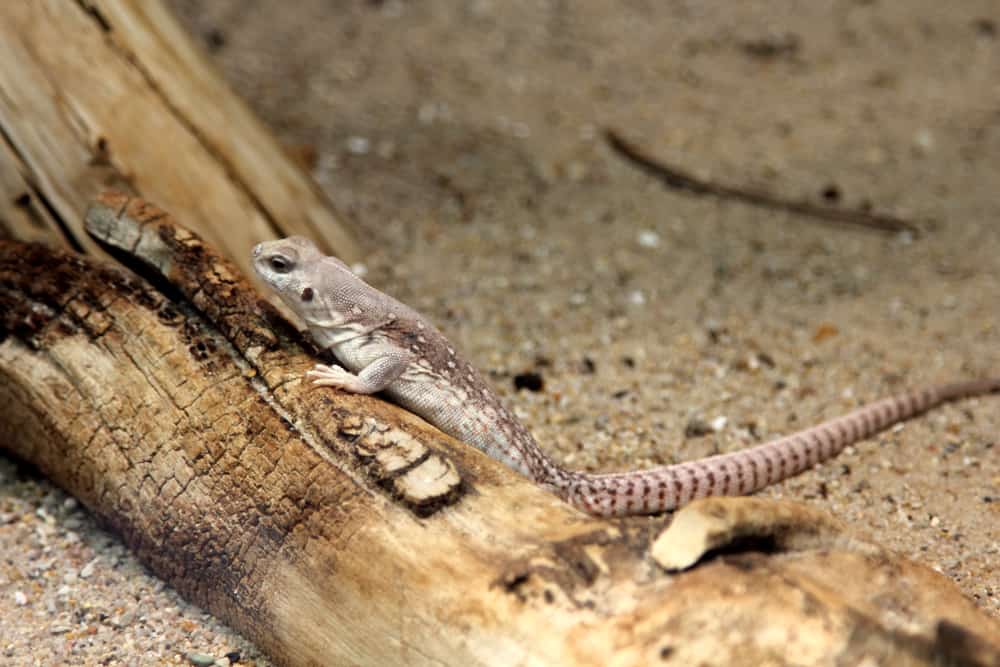
We’ll mention this more than once, but having a deep substrate is essential if you want to keep this species healthy. They’re burrowers and MUST be able to dig.
Substrate
Only one substrate will do: Sand.
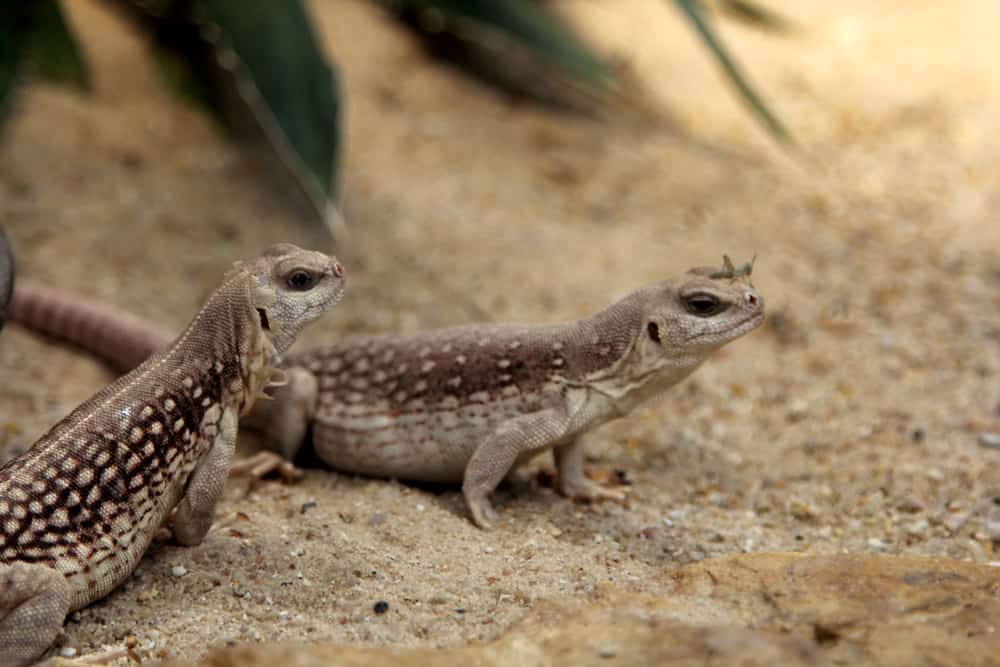
Avoid using any type of sand that might contain chlorine or salt, like pool filter sand or salted play sand.
Some hobbyists use clean building sand or river sand.
We recommend buying reptile sand. It’s sourced from a chemical-free quarry and not mixed with anything.
Since desert iguanas are burrowers by nature, you need to ensure that they have at least ten inches of substrate.
Ensure that the sand stays moist (light moist, not damp) at all times, so the burrows won’t collapse.
What Do Desert Iguanas Eat?
What do desert iguanas eat? Desert iguanas eat mainly leaves, flowers, and invertebrates.
While the desert iguana resembles a tiny Godzilla, it terrifies flowers for the most part.
These lizards mainly live on the leaves and flowers of creosote and other desert plants. They supplement their diets with the occasional insect.
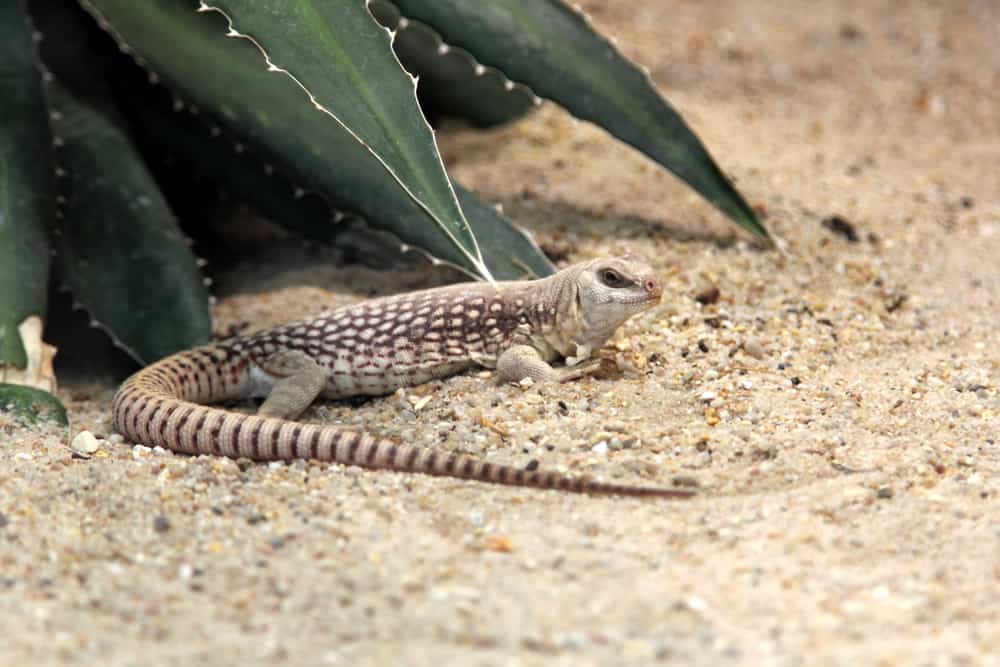
These lizards eat the fecal pellets of their kind as well as other animals.
Eating dung establishes healthy colonies of gut bacteria that break down the tough desert plants.
If you’re curious, you can also find out what other iguanas eat in our separate guide.
Are Desert Iguanas Dangerous?
The words ‘desert iguana’ and ‘harmful’ don’t belong in the same sentence unless you’re a tasty flower.
These almost vegetarian lizards are harmless. They tend to run for the nearest hole or crevice when threatened.
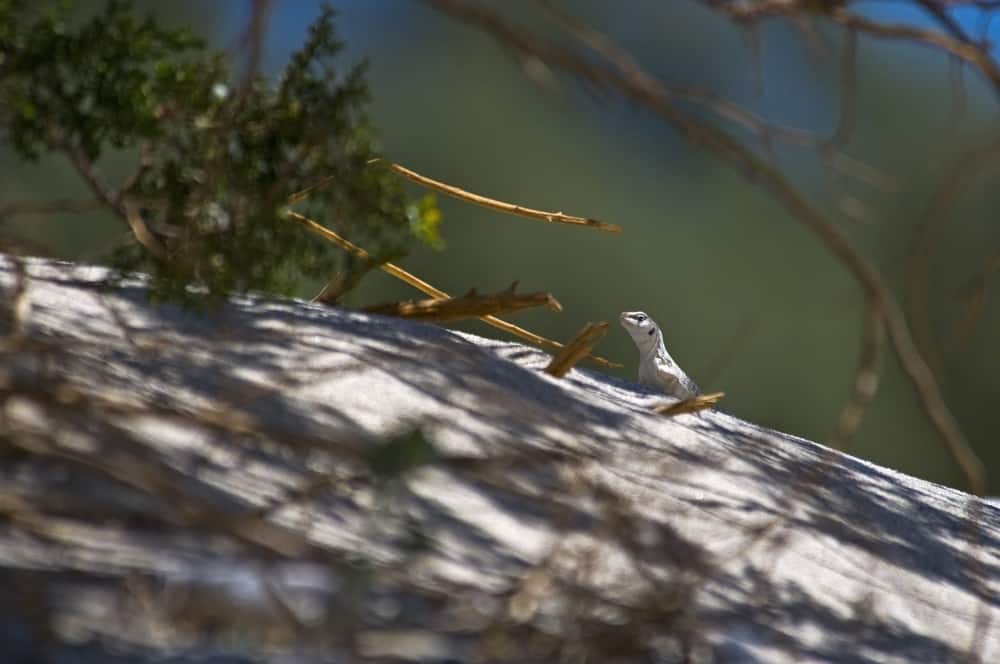
Some people have even asked, “Are desert iguanas venomous?” The simple answer is no.
Most iguanas have atrophied venom glands that produce mild venom.
The Desert Iguana does not need venom and has lost it.
Some people refer to desert iguanas as the friendliest lizards in the desert. This description (while whimsical) is more or less accurate.
Are Desert Iguana Endangered?
The IUCN lists desert iguanas, Dipsosaurus dorsalis, as Least Concern, which means they’re in no danger whatsoever.
Books like the Field Guide to Amphibians and Reptiles of the San Diego Region by California Press state that desert iguanas are some of the most common Western reptiles in the desert.
Unlike many other species, the desert iguana isn’t at any real risk from the pet trade, which is a great relief.
However, it’s best to buy captive-bred desert iguanas when possible, since they’re typically more docile and less likely to have parasites or diseases.
We hope you’ve enjoyed this article about the desert iguana, Dipsosaurus dorsalis. If you’d like to learn more about lizards, check out some of our other content.
We have articles about the best pet lizards as well as the biggest pet lizards that suit each keeper’s experience level.
If you’re a more experienced keeper looking for a challenge, then the large rhino iguana species might be an option worth considering.
We also cover individual species like armadillo lizards and caiman lizards.
If you’re a bit geeky (like us), you can also check out this article to learn more about the types of lizards.
Do you have a desert iguana? Let us know in the comments.
